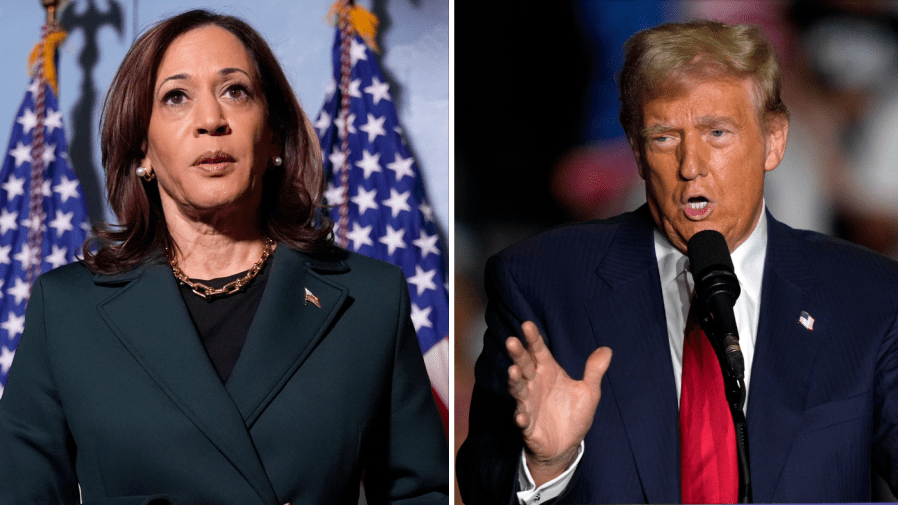
With less than two weeks until the presidential election, most polls show a virtually tied race between Vice President Kamala Harris and Former President Donald Trump.
At the same time, it’s clear that there has been a slight but not insignificant movement toward Trump in the final weeks of the campaign, and a closer look at the numbers indicates that the former president is better positioned now than at any other point since Harris entered the race.
Several new national surveys — by Wall Street Journal, CNBC and Forbes/HarrisX — each find Trump with a 2-3 point lead over Harris, and the final New York Times-Siena survey shows a dead heat at 48 percent. While these ranges technically fall within the margin of polling error, the swing toward Trump since early September — of 4 points in the Wall Street Journal survey — does not. Rather, it suggests real movement toward him over the last several weeks.
On the surface, polling in the all-important swing states is a mixed bag. The New York Times polling average has Harris leading slightly in Michigan, Nevada, Pennsylvania and Wisconsin, whereas RealClearPolitics’ aggregate has Trump ahead across all seven battlegrounds.
That said, it is quite telling how the race has shifted.
In the most pivotal state, Pennsylvania, Trump has taken the lead in FiveThirtyEight’s aggregate of the last week’s polls, which had Harris up just a few weeks ago. This aligns with the general shift in Trump’s direction across several swing states shown in Nate Silver’s Silver Bulletin average, which finds that polls have also ticked in his direction in Michigan and Wisconsin since last month.
Notably, early voting statistics show that Republicans have cut into Democrats’ advantage from 2020, as well. While early vote numbers should be taken with a grain of salt, they suggest high GOP voter enthusiasm and mark a clear reversal from four years ago, when Republicans shunned early voting.
Across the 25 states that publish party registration data, 41 percent of early votes have been cast by registered Democrats, and 36 percent by registered Republicans, per the University of Florida Election Lab. This 5-point early vote advantage for Democrats is significantly lower than their 14-point edge just four years ago.
Below these surface-level polling and early vote numbers, demographic shifts in surveys — particularly by gender and ethnicity — point to additional problems for the Harris campaign.
Without a doubt, the emerging story of this election is the gender divide, as men are breaking decisively for Trump and women for Harris — and notably, Harris’s 12-point advantage among women is smaller than Trump’s 14-point lead with men, according to the aforementioned New York Times-Siena poll.
That said, it is worth noting that women have registered and voted at higher rates than men in every presidential election since 1980, which suggests that this divide may not necessarily disadvantage Harris too badly.
One area where Harris is clearly declining is among non-white voters. The latest CNBC poll shows that, while Harris has a 27-point lead with this group, her advantage has dropped by 10 points since August. In swing states with large populations of non-white voters, this could prove decisive.
To be sure, Harris’s deficits with this group are much more pronounced among men — indeed, while she leads Trump 56 percent to 37 percent among all Hispanic voters nationally, that lead shrinks to 3 points (48 percent to 45 percent) among Hispanic men, according to the same New York Times-Siena poll.
In Arizona and Nevada, two swing states with high Hispanic voter populations, David Paleologos, Suffolk University’s Political Research Center Director noted that “Harris is falling short of the 24-26 point advantage that Joe Biden carried with Hispanic voters.”
In 2020, Biden won both of those swing states by slim margins, taking Nevada by 2 points and Arizona by less than half a percentage point. This was made possibly by his large margins among this critical voting bloc. If Harris underperforms to the extent that the polling suggests, Trump could well win both of those battleground states, complicating her electoral map.
In that same vein, Harris’s numbers among Black voters have become less favorable. The same New York Times-Siena poll shows that 81 percent of Black voters and 70 percent of Black men back her, meaning she is underperforming Biden’s 2020 margins by 11 points and 17 points, respectively.
With an eye to the battleground states, it is critical to note that Harris is falling short of Biden’s margins among Black voters by 13 points in Georgia and 15 points in Michigan.
Furthermore, on voters’ top issues, which polls consistently find to be the economy and immigration, Trump retains an advantage over Harris. To be sure, Harris has cut her deficit on the economy in half over the last few months, but she remains deeply underwater on the issue of the Southern border in particular.
According to the same CNBC survey, Trump leads Harris by 2 points overall, yet he leads by 35 points among those most concerned about immigration, and by 13 points with voters who prioritize inflation.
Harris’s struggle on this issue was reinforced by her performance in the CNN town hall on Wednesday night, when she refused to say whether the Biden administration should have acted sooner to stem illegal immigration. Her response, was, as Democratic strategist David Axelrod put it, a “word salad.”
This all being said, this presidential race is perhaps one of the closest we will see in modern history, and could still go either way. However, with only days to go, it is clear that Trump is in a much stronger position than he was just weeks ago.
Douglas E. Schoen and Carly Cooperman are pollsters and partners with the public opinion company Schoen Cooperman Research based in New York. They are co-authors of the book, “America: Unite or Die.”

